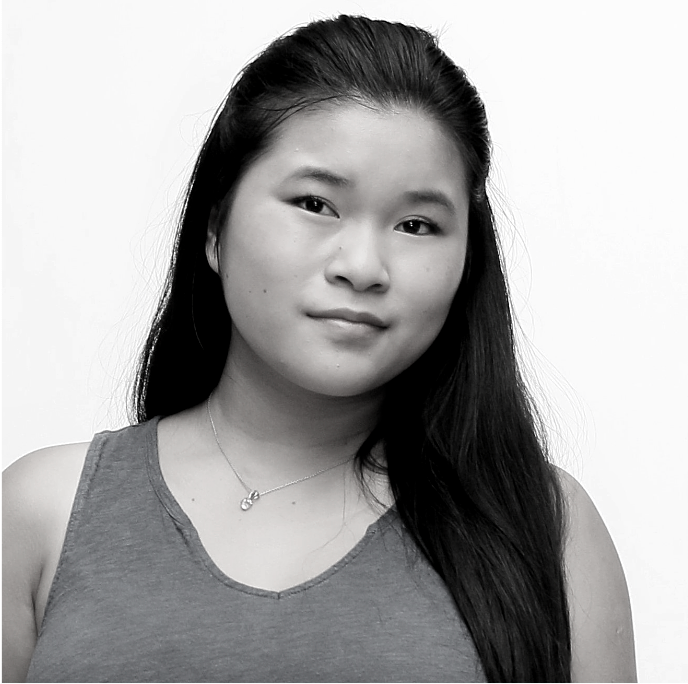REVIEW: The Yellow Wallpaper at Bygone Theatre
Can you imagine how it would feel to be alone for days on end, cut off from your friends and family, unable to go outside?
In the wake of the COVID-19 lockdowns, your answer is likely “yes.”
But loneliness and its effects on mental health are not new. Over 100 years before the global pandemic thrust billions into isolation — disproportionately affecting those already marginalized due to mental illness, gender, race, and/or other conditions — Charlotte Perkins Gilman explored these themes in her 1892 short story “The Yellow Wallpaper.”
Like its source material, Bygone Theatre’s production of The Yellow Wallpaper (adapted by Emily Dix and Kate McArthur) chronicles the isolation of an unnamed Woman (played by McArthur) as her mental health declines. Her confinement, prescribed as a rest cure by her unseen but oft-quoted physician husband John (voiced by Oliver Georgiou), is meant to ease her recent emotional distress. However, what John sees as his wife’s hysteria (a highly gendered diagnosis) is more likely a new mother experiencing postpartum depression. His mistreatment of her mental health does far more harm than good and the forced isolation quickly takes its toll.
John’s insistence that her confinement is for her own good can be read from our contemporary perspective as gaslighting or, in a perhaps more generous light, a complete inability to actually listen to his wife. If the latter is the case, this nonetheless demonstrates that good intentions do not preclude you from causing harm. In fact, when you don’t acknowledge your privilege over others, it happens all too often.
Unlike the protagonist and sole character in this immersive, ambulatory piece of theatre, audiences are free to wander. Presented inside the beautiful Georgian-era Campbell House Museum on Queen Street West, the story unfolds to the audience across four rooms. In a fifth room downstairs, McArthur performs alone, her performance captured from four different angles and projected into the rooms upstairs. One of the production’s many successful production and design choices is to project not onto screens, but rather different surfaces including a wall, a piece of semi-transparent fabric, and a dinner table (Bria Cole is the media producer).
By moving between rooms, each member of the audience determines their own experience of the story. What do they choose to see? What do they choose not to see? This question of seen versus unseen is thoughtfully woven throughout the production’s design.
I lied to you earlier. When I claimed McArthur’s character was the only one the audience sees, I neglected to mention a key character: that titular yellow wallpaper itself. In the story and in the production, the Woman becomes fixated on the wallpaper and begins to see patterns in it, projecting her own experience into her environment.
This most comes to life in this staging in a scene set in the bedroom. This is the location which most realizes the potential of the production’s unique format and in which projections and visual effects do the heaviest lifting. Projected in bold detail onto the wall from floor to ceiling is the wallpaper that enthralls the Woman. Audience members are free to observe the repetitions and variations in the pattern. The Woman is projected next to the wallpaper and at the matinee performance I attended, her image was difficult to see. Perhaps this was intentional — this is the room where the wallpaper is most alive, and she appears ghostly, as though she has faded so much in contrast that a concerted effort must be made to even see her. Or perhaps this was an unintended effect of a daytime performance.
Nonetheless, this scene makes the compelling point that context impacts perception and affects the story. How we see the Woman in this and the other rooms is framed and partly determined by the physical environment.
Bygone Theatre’s mandate is to create historical pieces with a vintage aesthetic, and in this production its mandate shines. There is a comprehensive overall visual palette in tones of yellow, green, brown, and white, giving the impression of an historical painting. From a production and design standpoint the work is excellent.
Dix and McArthur’s expansion of Gilman’s story, however, has mixed results. Audience members who walk into a room and decide to put on the pair of headphones they spot lying on a table suddenly become flies on the wall of a conversation between unseen characters discussing the Woman’s situation. This is effective in adding another layer to the story, another point from which to question what is hidden and what is exposed.
Overall, however, the production inherently lacks the pacing delivered in the original short story through its structure as diary entries. The urgency that comes through this episodic format is zapped from the production, making it sometimes challenging to focus on the story. I found moments when the Woman disappeared from the projections created more a sense of listening to a radio play than an invitation to contemplate the limits of what I, as an individual, could see.
This is an undoubtedly ambitious and innovative project, including an accessible version of each performance available to viewers at home. I applaud this dedication to access, and recommend the production to viewers interested in innovative and participatory approaches to live performance.
The Yellow Wallpaper runs at Campbell House Museum through March 18. Tickets are available here.










Comments